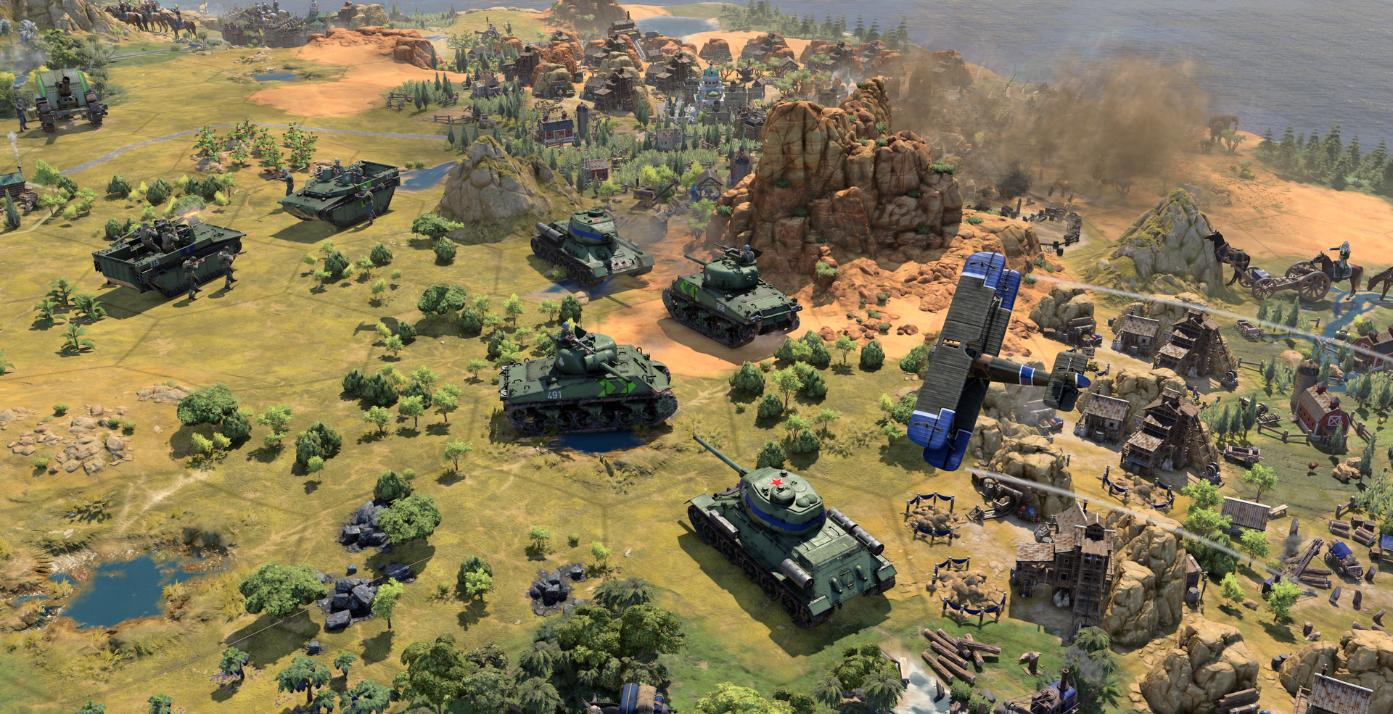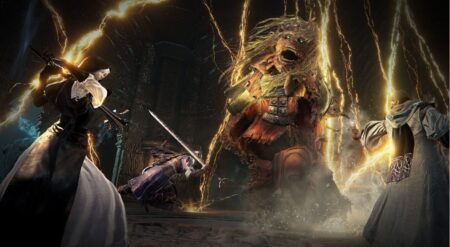The first couple of games of Civilization VII (Civilization 7)are very frustrating if you are a fan of the series. Developed by Firaxis Games and published by 2k Games, Civilization 7 attempts to cut down on the bloat and more fiddly aspects of leading your civilization from the ancient era to a modern victory. While this is an admirable goal, the changes made in its pursuit are as detrimental as beneficial.
The largest change introduced in Civilization 7 is its new age and legacy system. Matches that traditionally were played in an unbroken procession of turns have been split up into three sections or ages. Each age covers a certain timeframe in human history and comes with its own gameplay focuses and objectives. At the start of each age, players also choose a new civilization while their chosen leader stays the same, opening the door for pivots in strategy and variety mixed into runs.
Likes most of Civilization 7‘s changes, this new gameplay flow brings positives and negatives alike. Breaking up matches into ages is great at preventing matches from getting too bloated or feeling as if you made a mistake four hours ago that just came back to haunt you in the late game. Switching civilizations throughout the match also adds an incredible amount of interesting synergies and progressions to explore and play around with.
Synergies are Civilization 7’s Biggest Strength.

The synergies rise from keeping your same leader as the start as you progress through the ages. With selecting a new civilization rather than staying with one it is far easier to adapt and mix things up. For example, Benjamin Franklin’s leader ability is focused on generating science from buildings that typically only yield production as well as being able to build those buildings faster.
So, if you’re heading into the modern age you could select Japan to gain even more science when you build a new building over one from a previous age. Or, if you wanted to focus on science, you could go with Prussia to gain the increased science yields on tundra tiles. Or, if you wanted to focus on gold and influence, you could go with Qing and use your increased science to offset their decreased science yields.
But then there are the negatives, and there are quite a few. While the ages help change the focus of matches as they progress, the three suffer from diminishing quality as they go on. By the time one reaches the third and final age, modern, it is tempting to just restart and go back to the initial antiquity age because it is simply more fun. It also adds frustration to the experience through its new crises and legacy systems.
Crises occur at the end of ages and are meant to emulate the historic tendency of hardship proceeding large advances in society. It is a fun concept, but in reality, it tends to be frustrating. Each crisis forces players to pick more and more negative modifiers for their empire, making the last handful of turns for each age the most challenging and ending the age on a low note rather than celebrating one’s victories.
The ages system also introduces the legacy system, which is bolted onto the series’ traditional victories. To win a game of Civilization 7 players have to achieve one of a selection of goals that focus on their empire’s military prowess, scientific achievements, cultural magnetism, or economic ubiquity. During each age, players are given guidelines and objectives to achieve that lead them toward these victory conditions. Achieving the objectives then gives the player a buff or two, moving into the next age.
Newcomers are extremely welcome, with different takes on old systems or changes that eliminate them altogether.

The legacy system likely works well for newcomers to the series or players who desire some help parsing through the dense mechanics and systems at play in every Civilization 7 match. But they also come with the side effect of feeling restrictive and diminishing the variation of play styles and strategies brought about by changing civilizations.
Civilization 7‘s cultural victory works as a great example when contrasted with Civilization 6. In the modern age of Civilization 7, to win a cultural victory, you have to research a couple of specific civics, build either a museum or university, gather some artifacts to display, and then build the World’s Fair Wonder. Meanwhile, in Civilization 6 you have to generate tourism to outpace your opponents.
To do so, you can focus on getting great people to create great works of art, collect religious relics, build wonders, improve the appeal of your tiles with resorts and national parks, flood opponents with rock bands, or any combination of those. Add on top of that, navigating your diplomacy to keep open borders or weaken other culturally strong civilizations, and it offers players a wide spectrum of options and approaches that they can adapt to and piece together as they. By contrast, Civilization 7 feels more like playing through a checklist or a linear mission.
But this isn’t the only missing setting in Civilization 7. For some reason, numerous match options that previously were series standards are absent here. Options like larger map sizes, control over how many civilizations spawn on the map, or even a wider variety of map layouts.

At the same time, the game’s consistent streamlining of the experience carries some beneficial innovations, like removing builders and introducing commanders to better manage armies. However, the visual experience borders on entire negativity. The terrain and map details have a lot of great detail, but that is the only positive aspect.
On a lesser level, there are the ugly leader models that look woefully underbaked, almost like what you would expect in a mobile ad for a Civilization knock-off. Then, there are the ease of use changes, such as buildings no longer being color-coded depending on the yields they provide. In its predecessor, one could gather what a city is built for with a glance thanks to its colors, but in Civilization 7‘s grey mesh cities, the same information is gathered by hovering over every tile one by one and trying to remember what has all been placed.
This speaks to the game’s biggest visual issue as well: the UI. The UI in Civilization 7 is, simply put, one of the worst menu systems to ever be built for a strategy title. It is constantly beset by lag. Its screens also have much less information than previous titles, requiring you to switch between them frequently, making the lag issues even worse. Buttons have been moved to inconvenient or nonsensical positions while completely removing hotkeys. Navigating the menus takes more time and gives players much less information for their effort.
The UI is Firaxis’ latest title’s biggest fault, and it mars the entire experience.

All of the UI’s elements are also absurdly large, especially when playing on high resolutions. Much more of the map and elements are blocked by UI while playing. There are even pop-up windows for events that block most of, if not all, of the screen, making it difficult to check anything before making a decision. On PC, it feels as though the console UI was directly ported to the platform without adjustments, which is a very strange position to be in, both with the game’s price and its storied past on PC.
Lenses and reports have been stripped down to the point of being functionless. Gone are all of the lenses fans have gotten used to, replaced with only a few options that used to be standard graphical settings like toggling tile yields. Meanwhile, reports fail to give the specific details to justify looking at them.
Civilization 7 will tell you that your city is yielding 30 science per turn but won’t give you a breakdown of where each piece of that comes from. And, worst of all, there is information that is completely absent but necessary to know like the ranges of city trading or why you are unable to place a building somewhere. It adds an infuriating layer to the entire experience that is prevalent throughout the entire game and is in desperate need of heavy patching.
Besides the abysmal UI, Civilization 7‘s simplifying changes come down to personal taste. For newcomers or fans hungry for a more pared-back or guided experience, there is a lot to love in them. More experienced players or those who value self-driven strategy will find more friction despite some changes being more universally beneficial. Combined with its lack of settings and poor visual design, it has a long way to go before it will live up to the series’ storied pedigree.
Civilization 7 is available for purchase on PC, PlayStation 4, PlayStation 5, Switch, Xbox One, and Xbox Series X/S.
Civilization 7
-
Rating - 5/105/10
TL;DR
Besides the abysmal UI, Civilization 7‘s simplifying changes come down to personal taste. For newcomers or fans hungry for a more pared-back or guided experience, there is a lot to love in them. More experienced players or those who value self-driven strategy will find more friction despite some changes being more universally beneficial.








